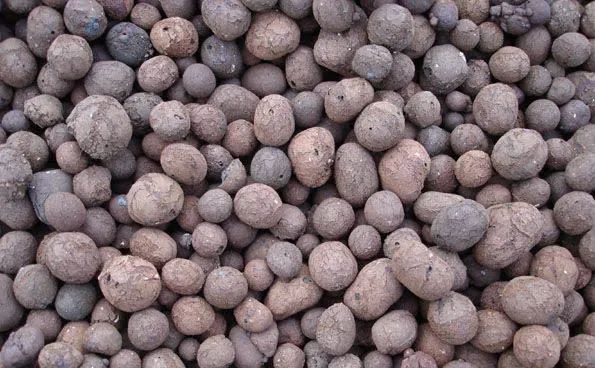What are the uses and finished products of waste rock, tailings and coal gangue?
For the use of mine waste rock and tailings, many people know that they can be used to produce recycled sand and gravel aggregates, but they are not particularly aware of other uses. Today, I will share with you 13 common uses of mine waste rock and tailings.
1. Sand aggregate
Sand and gravel aggregates are the most used, indispensable and irreplaceable basic materials for infrastructure projects such as buildings, roads and bridges. However, sand and gravel aggregates are non-renewable resources, and the mining for thousands of years has caused great damage to the earth’s environment. In the metal and non-metal mine industries, in the long-term mining and production process, the mines produce a large amount of waste rock and tailings. The use of these tailings resources can completely replace or partially replace sand and gravel aggregates.
Many waste rocks from mines can be used as coarse and medium aggregates, and the physical properties and chemical composition of the rock should be considered when evaluating aggregates. Both depend on the type of rock, but also the degree of fracture development and weathering. Among the physical properties, the stronger one is of course advantageous; in addition, the elastic modulus should also be considered, the closer the elastic modulus is to the cement mortar, the better. At the same time, it is also required that the waste rock used as aggregate should not contain too much flaky or fibrous cuttings. In general, limestone, fine sandstone, quartzite, relatively finely crystalline granite, diorite, gneiss and basalt are suitable as aggregates. The concrete of some airport runways also specifically requires basalt as an aggregate, which is related to the highest strength of basalt in natural rocks. The chemical composition of rock can not be ignored, mainly to prevent the problem of alkali-aggregate reaction, which is known as the cancer of concrete internationally.
2. Concrete fine aggregate
The use of tailings as fine aggregate for concrete should also consider the same requirements for coarse and medium aggregates. Generally speaking, tailing sand is better than sea sand, because sea sand often contains salt and chloride ions, which is easy to corrode steel bars, and the surface of tailings is rough and angular, which can increase the strength of concrete. However, to use the tailings as fine aggregate, a certain particle size is required. When the particle size does not meet the requirements, the tailings need to be screened. Because the coarse sand makes the concrete more dry, the viscosity decreases, and the workability is not good; the ultra-fine sand not only makes the concrete easy to segregate, but also requires a large amount of water, thereby increasing the amount of cement.
3. Use waste rock as railway ballast
The requirement for railway ballast is that it is not brittle under vibration pressure. Of course, rocks with developed lamellae or bedding are not suitable for use as ballast, while limestone and basalt are more suitable for use as railway ballast.

4. The basic raw materials of cement
The basic raw materials of cement are limestone and clay minerals. Limestone, claystone, shale, etc. are all common waste rocks in mines. In addition, tailings containing corresponding components can also be used as basic raw materials. It should be noted that for the utilization of limestone and claystone, do not just mechanically copy the grade index requirements in the past specifications.
5. Mixing materials of cement
Adding an appropriate amount of mixed materials to cement can not only improve some properties of cement, but also save the consumption of basic materials. Mixed materials are divided into two types: filling and active. At present, blast furnace slag and fly ash have become commonly used cement active admixture materials. In fact some tailings are also suitable for use as mixed materials, such as tailings from vanadium ilmenite deposits in amphibole. In addition, waste rock (or tailings) with higher content of amorphous substances, such as vitreous volcanic rock, tuff, pumice, etc., can also be used as active mixed materials.
6. Cement calibration raw materials
Iron calibration material and siliceous calibration material. Both feedstocks can also utilize tailings. The tailings of some metal mines have high iron content and can be sold to cement plants as iron correction raw materials; the tailings of some iron mines contain both a large amount of silicon and iron, and can also be used as correction raw materials.
7, for the production of various types of bricks
At present, coal gangue bricks have become one of the main wall building materials to replace clay bricks. Not only can gangue red bricks be fired, but also hollow bricks can be fired. In fact, many shale waste stones are also suitable for making bricks, but the energy consumption Higher than gangue bricks.
8. Use tailings ponds to build fields
This technique is to turn wasteland into arable land.
9. Use waste rock or tailings to bury open pits and restore fields
Waste rock or tailings are discharged into open pits that have existed in the past and covered with a certain thickness of arable soil to make it arable. This is the approach some mines are taking.
10. As a raw material for the production of silica bricks
Silica brick is an acid refractory material, which is widely used in glass melting furnaces, coke ovens or hot blast stoves and other facilities.
11. For the production of calcium carbonate
Papermaking white mud, calcium carbide slag, phosphogypsum, alkali slag, etc. contain a large amount of calcium hydroxide or calcium oxide, which can be used as raw materials for the production of light calcium carbonate.
12. Used as raw material of heavy calcium carbonate
Heavy calcium carbonate is mainly used as the main raw material or filler in plastics, rubber, glass, ceramics, toothpaste and other industries. It mainly uses calcite and dolomite as the main raw materials, and its requirements are high purity, low iron content, no sulfur, and harmless to human body. There are fragments of large calcite veins or dolomite veins or pure marble and dolomite in the waste rock of some deposits, which can be selected from the waste rock as this raw material.
13. Re-election of tailings to recover valuable components from tailings
Carrying out tailings re-selection is an important measure to improve resource utilization, and it is also conducive to reducing tailings discharge. It can be seen from the results of tailings re-selection that it not only improves the recovery rate of resources, but also brings huge economic benefits to the enterprise.

In the field of mining, the industrially developed countries in the world have taken waste-free mines as their development goals, and the comprehensive utilization of tailings has been used as a symbol to measure a country’s scientific and technological level and economic development. The utilization rate of foreign tailings can reach more than 60%, and some European countries are already developing towards the goal of no-waste mines.
The mining of river sand is banned, the sand and gravel industry is rectified, there is a shortage of sand and gravel, and prices are soaring. The resource utilization of solid waste is particularly urgent, and its recycled materials can replace some artificial and natural sand and gravel aggregates to achieve recycling, which may become a new opportunity.
